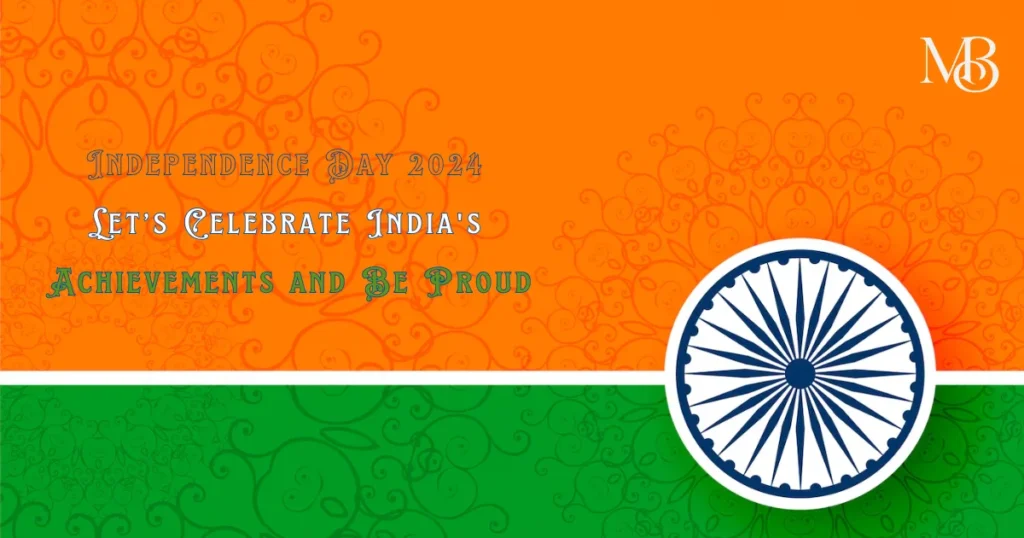The story of India’s independence is not just the tale of a nation’s freedom but a testament to the resilience, determination, and unity of its people. On August 15, 1947, India broke the chains of colonial rule and embarked on a journey that would transform it from a colonized land to one of the world’s leading democracies. As we stand in 2024, it’s a moment of pride and reflection—celebrating the milestones that have shaped modern India.

Independence Day: The Dawn of Independence (1947-1950)
India’s journey to independence was a struggle marked by sacrifices, led by visionary leaders like Mahatma Gandhi, Jawaharlal Nehru, Sardar Vallabhbhai Patel, and countless others. The midnight of August 15, 1947, saw India awaken to a new dawn, free from British rule. However, the path ahead was challenging—partition, communal violence, and the daunting task of nation-building lay ahead.
Yet, the newly independent India stood resilient. The adoption of the Constitution on January 26, 1950, marked the establishment of the Republic of India, laying the foundation for a sovereign, socialist, secular, and democratic republic. The Indian Constitution, one of the lengthiest in the world, became the guiding force in shaping the country’s future, emphasizing justice, liberty, equality, and fraternity.
Independence Day: Economic Reforms and Growth (1951-1990)
Post-independence, India adopted a mixed economy, balancing public and private sector roles in economic development. The early years focused on self-sufficiency, with the Green Revolution in the 1960s being a significant success story. This agricultural transformation turned India from a food-deficient nation to one that was self-reliant in food production.
India’s commitment to industrialization saw the establishment of several public sector enterprises, contributing to economic growth. The Five-Year Plans played a crucial role in setting economic priorities and driving development. However, the economy faced challenges, including slow growth, known as the “Hindu rate of growth,” and a balance of payments crisis in the late 1980s.
Independence Day: The Era of Liberalization (1991-2000)
The economic crisis of 1991 was a turning point. Under the leadership of then-Prime Minister P.V. Narasimha Rao and Finance Minister Dr. Manmohan Singh, India embraced economic liberalization. The reforms opened up the Indian economy, inviting foreign investments, encouraging private enterprise, and reducing the role of the state in business.
This period marked India’s transition to a global economy. The IT revolution, fueled by the rise of software giants like Infosys and TCS, placed India on the world map as a technology hub. The liberalization era unleashed the entrepreneurial spirit of Indians, leading to rapid economic growth, a burgeoning middle class, and increased global influence.
Independence Day: India on the Global Stage (2000-2020)
The turn of the millennium saw India emerge as a significant player on the global stage. The economy grew rapidly, making India one of the fastest-growing major economies in the world. India’s space program, led by ISRO, achieved remarkable milestones, including the successful Mars Orbiter Mission (Mangalyaan) in 2013, making India the first Asian nation to reach Mars orbit and the fourth space agency to do so globally.
India’s soft power also grew, with Bollywood, yoga, and Indian cuisine gaining global popularity. The Indian diaspora became a powerful force, contributing significantly to the global economy and influencing international policy. Domestically, initiatives like the Right to Information Act, MNREGA, and the National Health Mission brought about significant social change.
Independence Day: India Today and the Road Ahead (2021-2024)
As we stand in 2024, India continues to rise, facing challenges with resilience and optimism. The COVID-19 pandemic tested the nation’s healthcare infrastructure, but it also showcased India’s capability to produce and distribute vaccines on a massive scale, earning global recognition as the “pharmacy of the world.”
India’s strides in digital innovation are commendable, with initiatives like Digital India and Aadhaar transforming governance and service delivery. The startup ecosystem has flourished, making India home to numerous unicorns and a global leader in tech innovation. The Gaganyaan mission, aiming to send Indians to space, reflects the nation’s ambition to push the boundaries of scientific exploration.
Socially, India has made progress in areas like women’s empowerment, education, and rural development. The Swachh Bharat Mission brought about a significant change in public health and sanitation. Efforts towards renewable energy, particularly solar power, have positioned India as a leader in the global fight against climate change.
Independence Day: Conclusion
The journey of Indian independence and its evolution thereafter is a saga of hope, perseverance, and achievement. From a nascent democracy grappling with partition to a confident nation carving its niche on the global stage, India’s story is one of inspiration. As we look forward to the future, the achievements of the past 77 years serve as a reminder of what India can accomplish with unity, vision, and the unwavering spirit of its people.
You might also like: Independence Day Wishes and Quotes 2024
You might also like: 5 Countries that Celebrate Freedom on August 15th with India
India’s journey is far from over—each milestone is a stepping stone towards greater achievements. The best, as they say, is yet to come. For more such interesting blogs follow our culture page.


